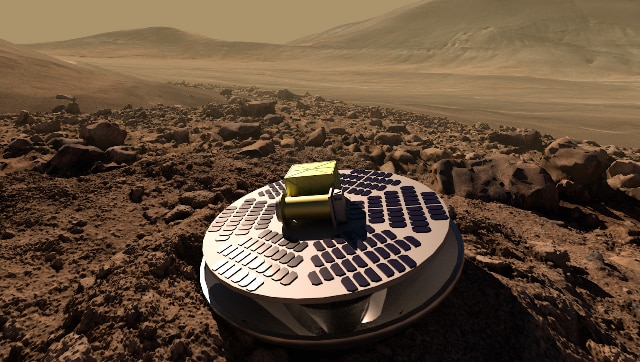NASA plans on testing crash landing space module on Mars to make inter-planetary exploration cheaper
NASA as well as a number of other space agencies have had many successful missions to Mars, and are currently exploring the Martian surface for a number of reasons. All in all, NASA themselves have landed on Mars about 9 times so far. However, the space agency now wants know, what it would take to crash land onto a different planet, and how should they go about it.

NASA is currently testing out an entirely new way to land on the surface of Mars and other similar planets, in which, instead of going for a soft landing, they plan to crash land their vehicles.
The American space agency had just successfully conducted their DART mission, in which they crashed a basic satellite into the Didymos moon of the Dimorphos mini asteroid. NASA plans to take a similar approach with their latest experiment, but this time around, the objective is to ensure minimal damage to the crash-landing spacecraft.
To that end, NASA has designed a new experimental lander called SHIELD or Simplified High Impact Energy Landing Device. The new lander uses an accordion-like collapsible base, which functions in a manner similar to the crumple zone of a car. This would allow NASA to build a superstructure that would be free of impact, on top of the base structure.
To test whether this theory is plausible, a team of scientists and engineers dropped a full-sized prototype of the SHIELD’s collapsible attenuator, which consisted of an inverted pyramid of metal rings that would absorb a majority of the impact. They also fitted the superstructure of the aircraft with a couple of computers, a radio, a smartphone and an accelerometer to gauge the impact that the electronics would have to deal with.
The SHIELD was dropped at a speed of 110mph to mimic how it would land on Mars. Normally, spacecrafts reach speeds of up to 14,500mph before they enter the lower atmosphere of Mars. However, the atmospheric drag reduces that speed by a significant amount.
If successful, then this newer design will help to drastically reduce the cost of landing on Mars by simplifying entry, landing and expanding options on Mars and even beyond the red planet. “We think we could go to more treacherous areas, where we wouldn’t want to risk trying to place a billion-dollar rover with our current landing systems. Maybe we could even land several of these at different difficult-to-access locations to build a network,” Lou Giersch of NASA’s JPL, SHIELD’s project manager, said in NASA’s blog.
from Firstpost Tech Latest News https://ift.tt/mWXIov0
Comments
Post a Comment